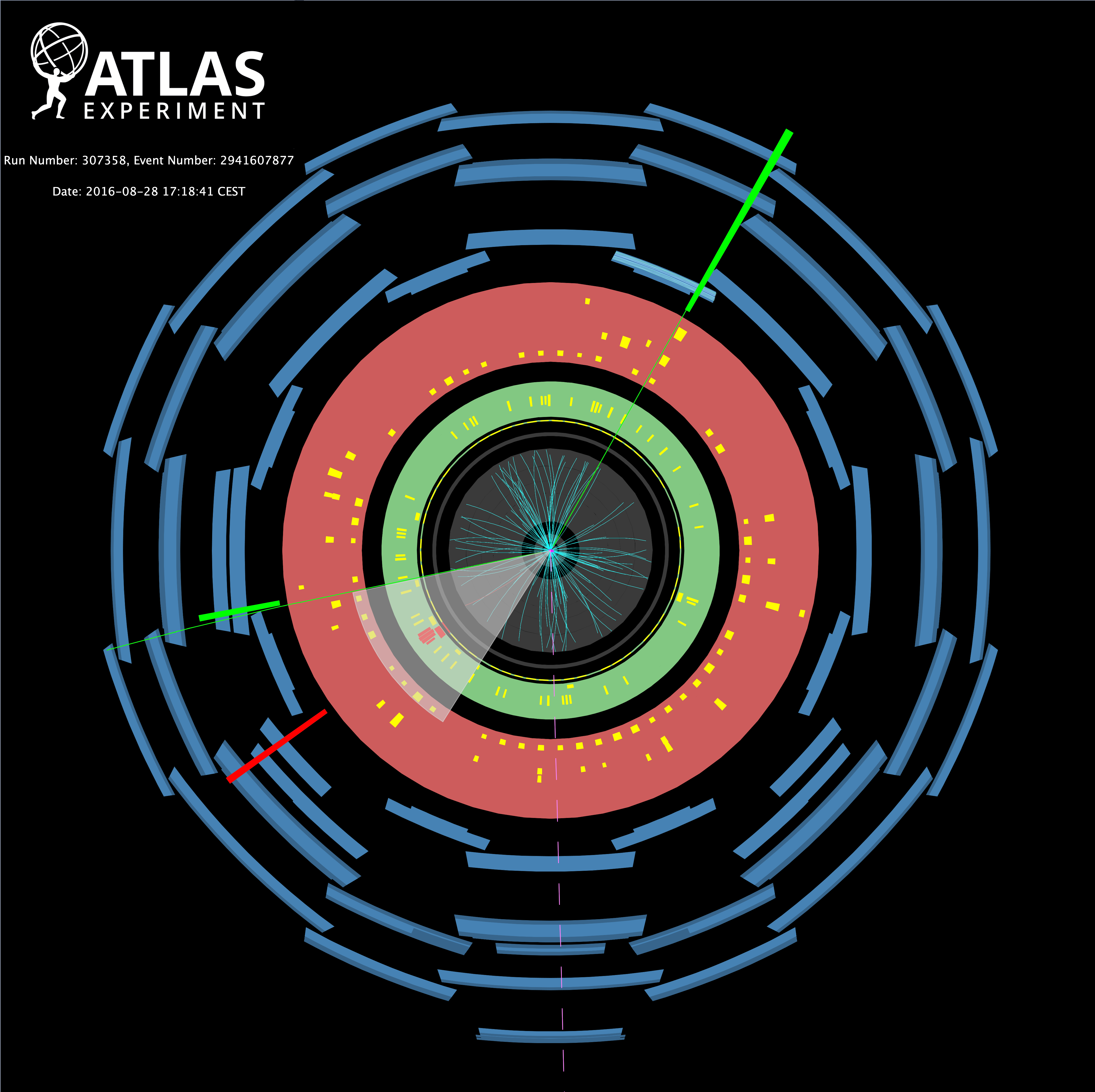Searching for new physics using asymmetric top-quark events
13 September 2021 | By
In the Large Hadron Collider (LHC), matter and antimatter are produced almost in equal amounts and behave in almost the same way. Finding the differences between these types of matter – while extremely challenging – could reveal well-hidden effects that hint at the existence of new particles and interactions.
In a new result presented at the TOP 2021 conference, the ATLAS Collaboration probed the heaviest-known elementary particle, the top quark, in search of these effects. High-energy LHC proton–proton collisions usually produce a top quark together with an antitop quark via the strong interaction. As protons are composite particles, the process involves the interaction of the proton’s elementary components – either a quark, antiquark or gluon. Depending on which of these components collide, the resulting top and antitop quarks can either have identical probabilities to be produced with certain energies and angles, or show a slight difference in their statistical behaviour.
The ATLAS Collaboration is studying the subtle differences in the energies and directions of top and antitop quarks.

ATLAS’ new analysis focuses on collisions of a quark with a gluon, leading to the production of a top–antitop quark pair together with another quark and nothing else. Their objective: to reveal subtle differences in the top and antitop energy and direction. By comparing the number of collision events in which the top quark has a higher energy than the antitop quark, and the ones in which the energy of the antitop is the higher one, physicists would be able to quantify this “energy asymmetry”.
This sounds easy in theory – but, in practice, there were several experimental challenges to overcome. Researchers had to correctly identify the collisions of a quark and a gluon, choose the right reference frame from which to measure the energy and direction of the top quarks, and then make the measurements. Since none of these things can be done perfectly, they also had to estimate the effect of the possible errors.
These challenges could be addressed with careful collision event selection. To enhance the likelihood of selecting events originating from a quark–gluon collision, physicists focused on events where the additional quark created alongside the top–antitop quark pair has a high transverse momentum. Additionally, they used simulations to estimate interactions not involving top–antitop pairs at all, but which may be accidentally selected.
ATLAS physicists were able to achieve approximately 90% accuracy on their measurements of the energy difference between the top and antitop quarks. By correcting for experimental effects in their measurements (a process known as “unfolding”), the team was able to compare their measurements with theoretical models.

As a result of this analysis, the ATLAS Collaboration measured the energy asymmetry in three intervals of the angle between outgoing and incoming quark (𝜃𝑗), as shown in Figure 1. The measured values are in agreement with the Standard Model prediction, which is at most a few percent. Since no significant discrepancy is observed, possible new particles and interactions beyond the Standard Model cannot have very large effects and therefore limits can be set on the values of some parameters describing the size of these effects.
Two of these parameters and their allowed values are shown in Figure 2. Depending on the “confidence level” one wants to reach, a larger (yellow) or smaller (green) area is still allowed around zero, which corresponds to the Standard Model without any further particles or interactions. The shape of the allowed region is rather peculiar and can therefore lead to interesting results when combined with other measurements, which tend to obtain more elliptical allowed regions.
This briefing, originally published 13 Sept 2021, was updated on 20 Oct 2021 to reflect the latest figures from arXiv: 2110.05453.
Links
- Measurement of the energy asymmetry in ttj production at 13 TeV with the ATLAS experiment and interpretation in the SMEFT framework (arXiv: 2110.05453, see figures)
- TOP2021 presentation by James Howarth: Top quark angular correlations at LHC with ATLAS and CMS
- TOP2021 presentation by Johannes Erdmann: Precision measurements in boosted top quark production with ATLAS
- See also the full lists of ATLAS Conference Notes and ATLAS Physics Papers.



